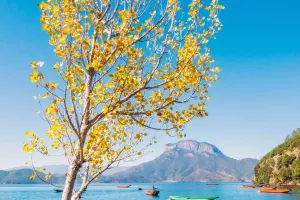Serengeti National Park is located in northwestern Tanzania and southwestern Kenya. Serengeti National Park is a vast grassland that includes Mara, Arusha, and Shinianga, covering an area of 30,000 square kilometers.
There are about 70 species of large mammals and 500 species of endemic birds on the grassland. The semi-annual migration of large animals is one of the top ten natural tourism wonders in the world. This is a paradise for wild animals, animals can run unscrupulously on the vast savannah of Africa.
As one of the largest wildlife reserves in Africa, Serengeti National Park is generally divided into three terrain areas: the Serengeti Plains, the Western Corridor and the North Serengeti. Among them, the Serengeti Plain is very vast, and the almost completely treeless grasslands in the south are the iconic landscape of this famous national park in Tanzania.
In summer, the Serengeti is full of green, lush water plants and giraffes everywhere. At times, even with the scorching sun, the temperature remains within an acceptable range. It has a savannah climate, and precipitation is mainly concentrated from November to May of the following year, with peak periods in December and March and April. The annual average temperature here is 20.8 ℃, the annual rainfall in the narrow strip near Lake Victoria in the west reaches 950 mm, and the annual rainfall near the Kenyan border at the northernmost point of the park reaches 1150 mm. Even so, almost all of it becomes desert during severe drought.
It's also one of the best places in the Serengeti to see cheetahs, hippos, crocodiles and elephants, and most people who come to the Serengeti are completely captivated by the spectacle of animal migration. In fact, the real fascination of the Serengeti is its entire ecosystem, including migratory and non-migratory animals throughout the year.
It is not only the best place for people to experience nature, but also a paradise for wild animals, which is home to the most diverse and largest wild animal groups in the world. Living in the camp here, you can not only experience nature but also get up close to wild animals.
The ecology of this grassland is excellent, and there are always stars at night, and the guests living in the tent can look up and see the sky full of stars. Surrounded by stars in the blue sky, this is the closest place to nature. The Serengeti savannah is full of mysterious colors and contains infinite vitality. The story of survival of the fittest, which is played out all the time here, is the eternal charm of this land. Walk along the river valley and enjoy the local wildlife no matter what time of day you come.
This is the only area in Africa where many terrestrial animals still migrate, and it is also the best preserved pristine ecosystem. In 1956, it was combined with Ngorongoro National Park, which was recognized internationally and was included in the "World Cultural and Natural Heritage List", becoming a UNESCO biological reserve in human and ecology.


